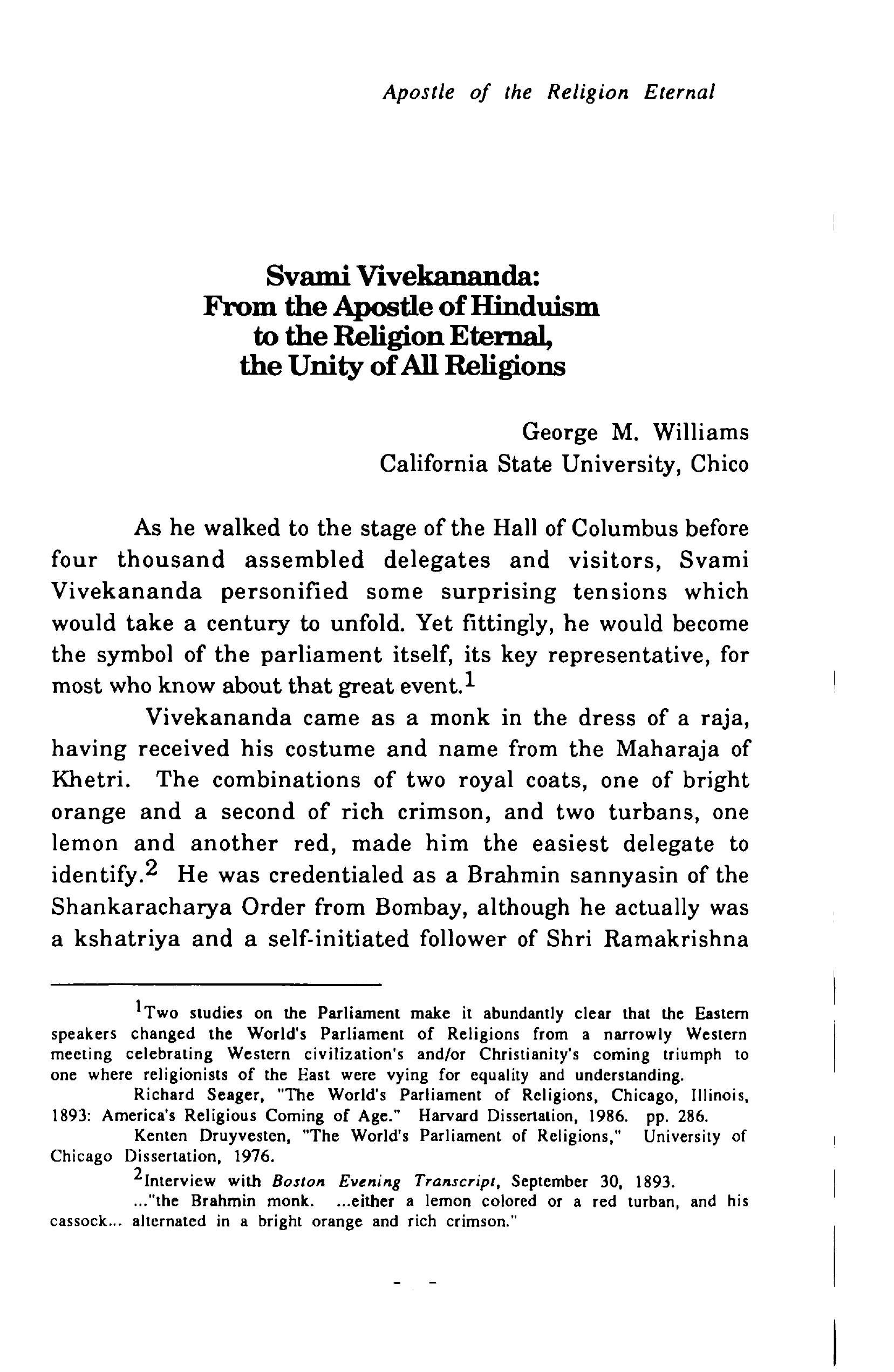
Vivekananda – Apostle of Hinduism, Religion Eternal
More DetailsSvami Vivekananda, a key representative of the Parliament of the World’s Religions in 1893, stood as a symbol of tensions that would unravel over the century. Dressed in royal garb gifted by the Maharaja of Khetri and representing a Brahmin sannyasin from Bombay, he embodied a unique blend of identities, as he was in fact a kshatriya and a follower of Shri Ramakrishna of Calcutta. Despite taking a vow of poverty, Vivekananda attended the Parliament with a mission to raise funds for India. At just 30 years old, he was the youngest of the religious leaders present and was noted for his diverse qualities – scholarly intellect, chaste monk-like character, warrior courage and temperament, explorative restlessness, organizational skills akin to a top business magnet, and the zealous drive of a prophet. These qualities are not easily harmonized, reflecting the complexities and tensions he embodied. His presence at the Parliament, along with other Eastern speakers, was instrumental in shifting the event from a Western-centric celebration towards a platform for equality and understanding among global religions.
Back